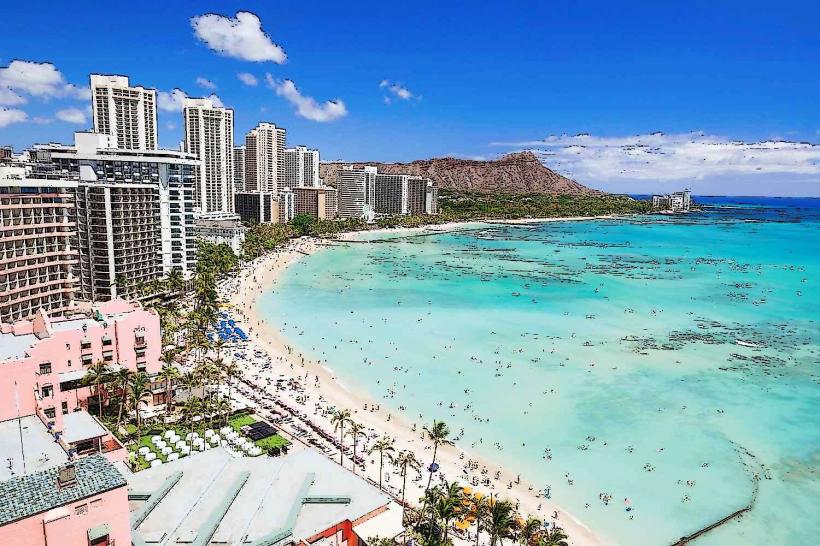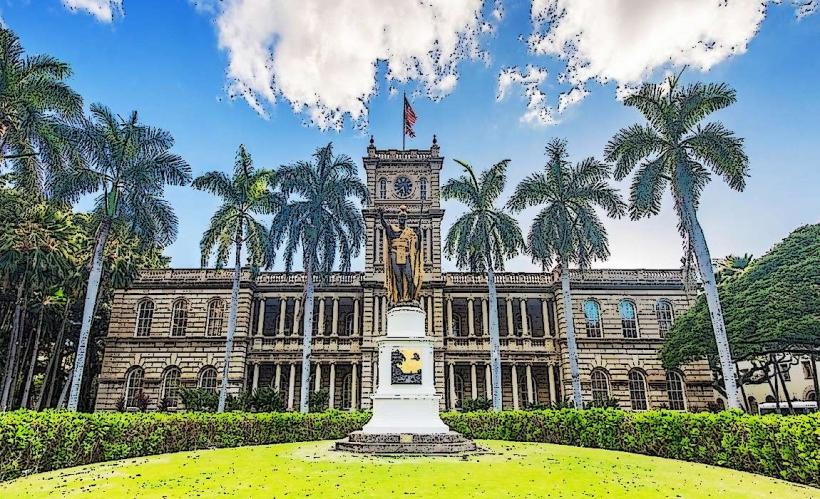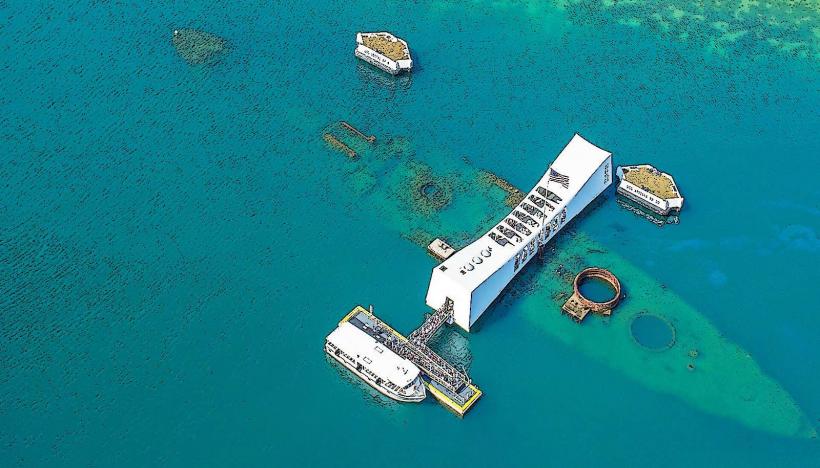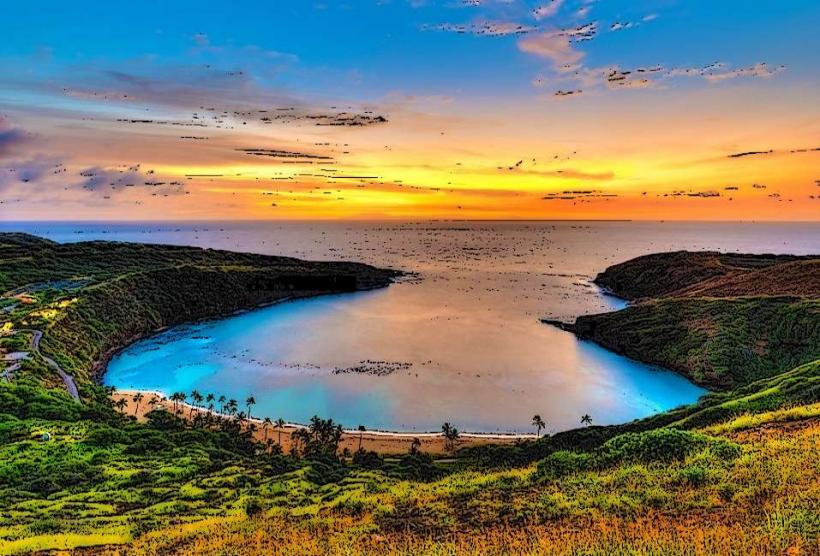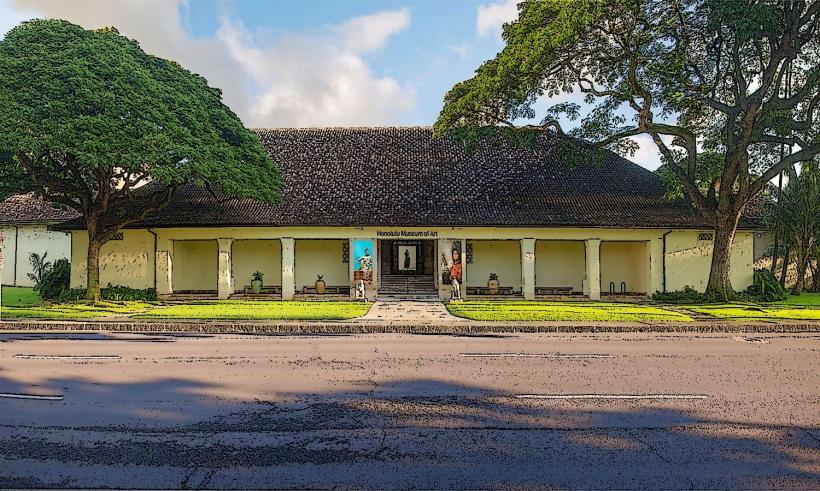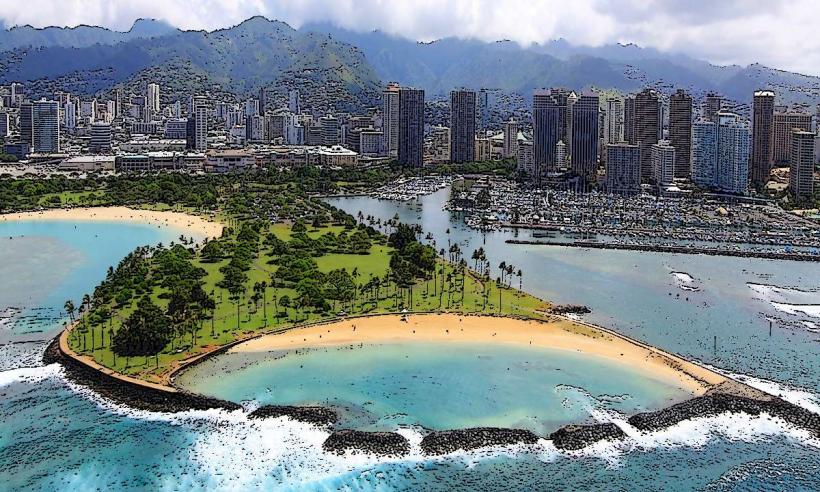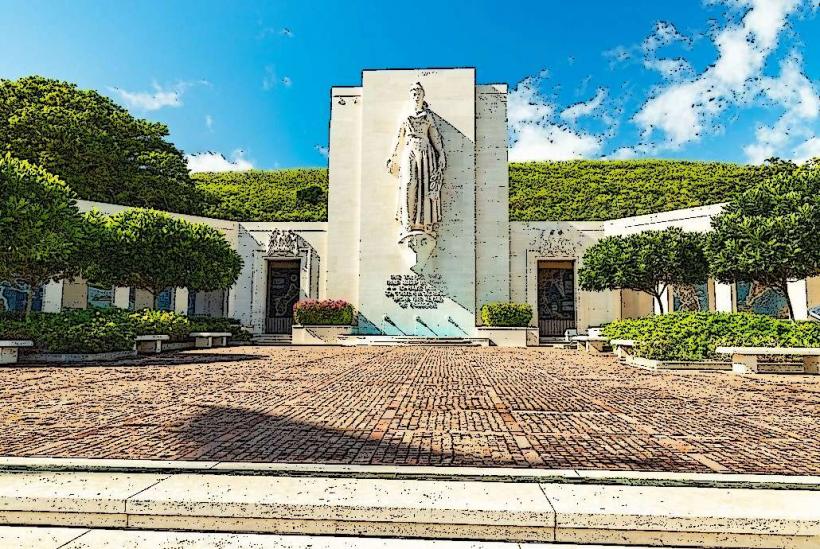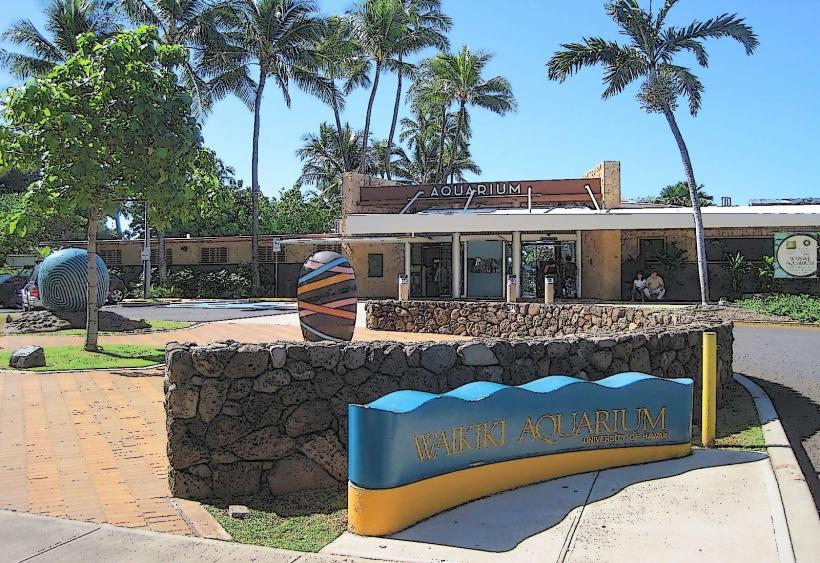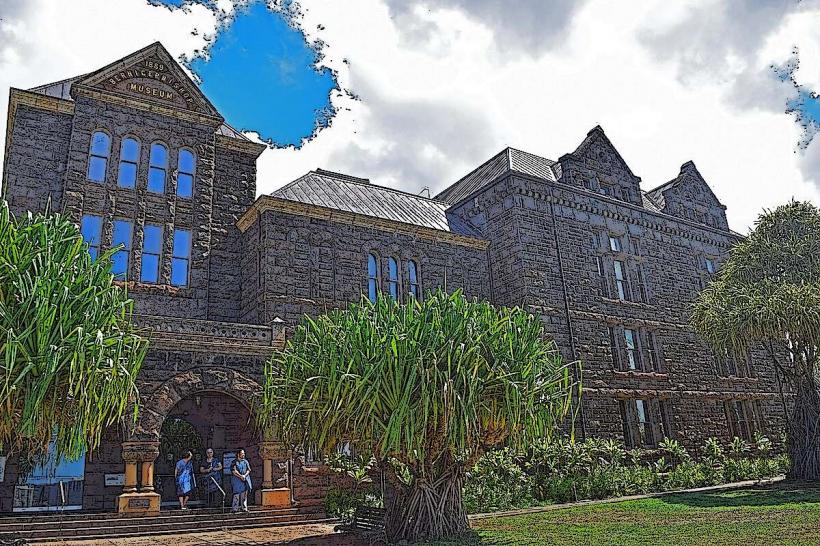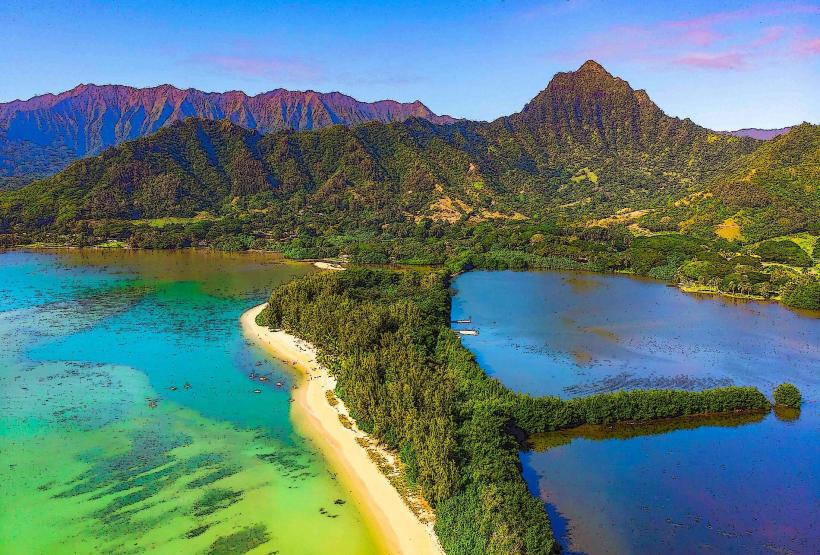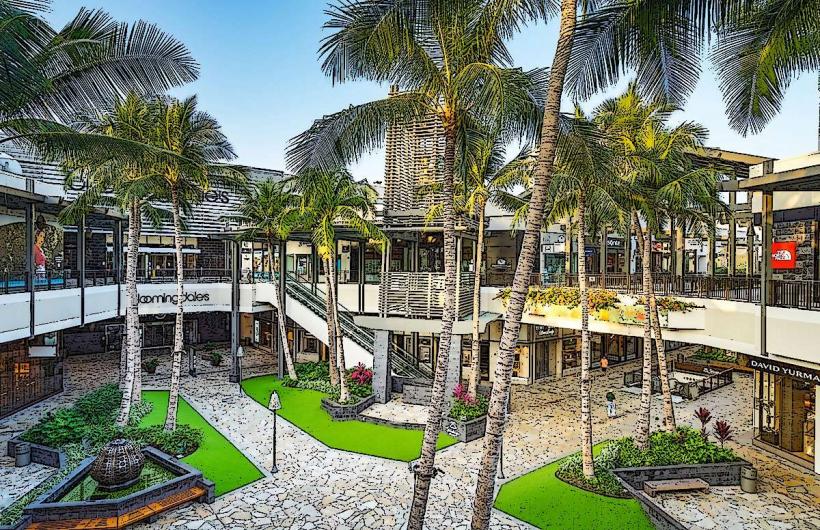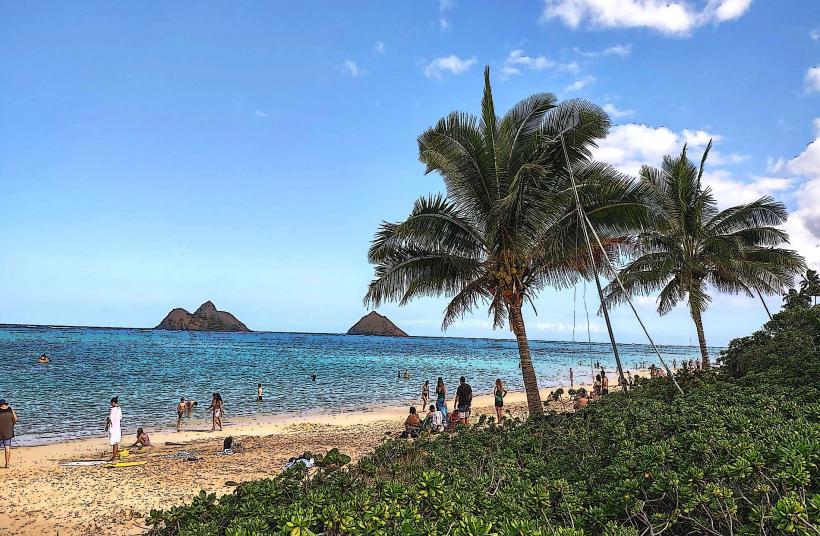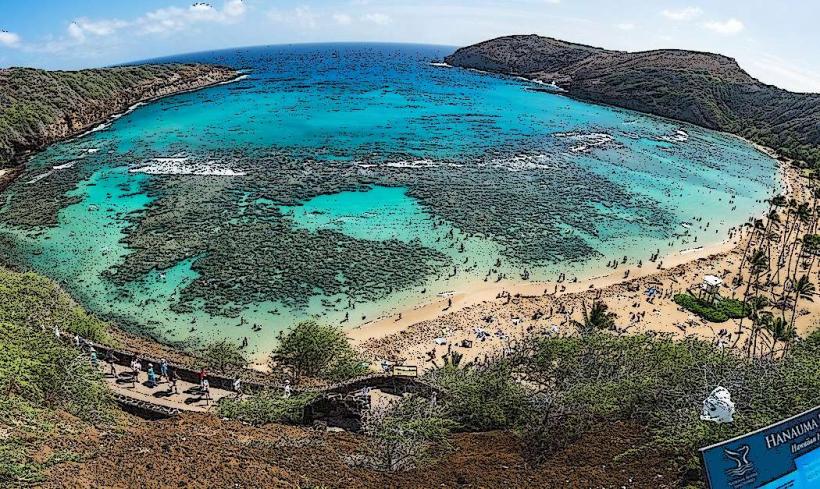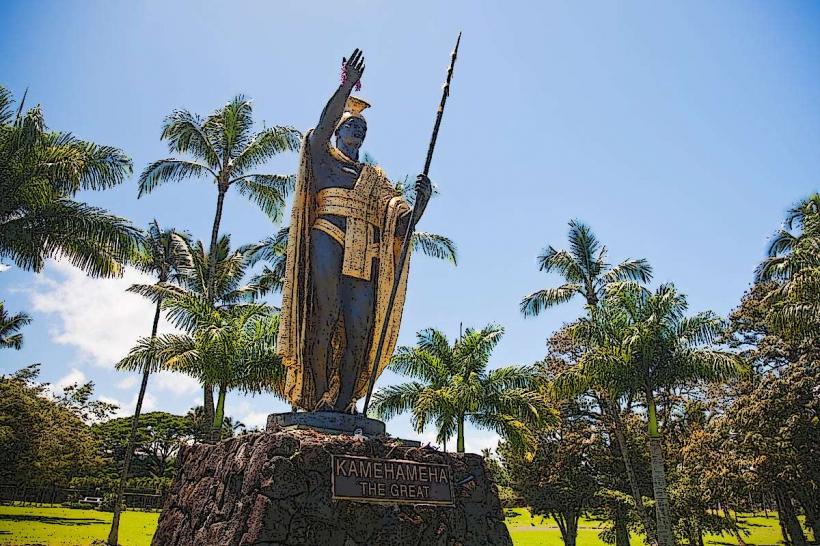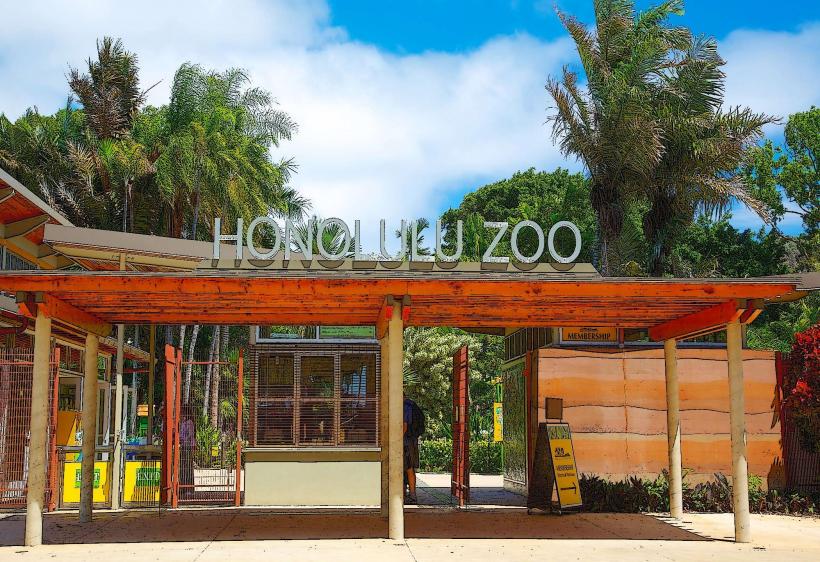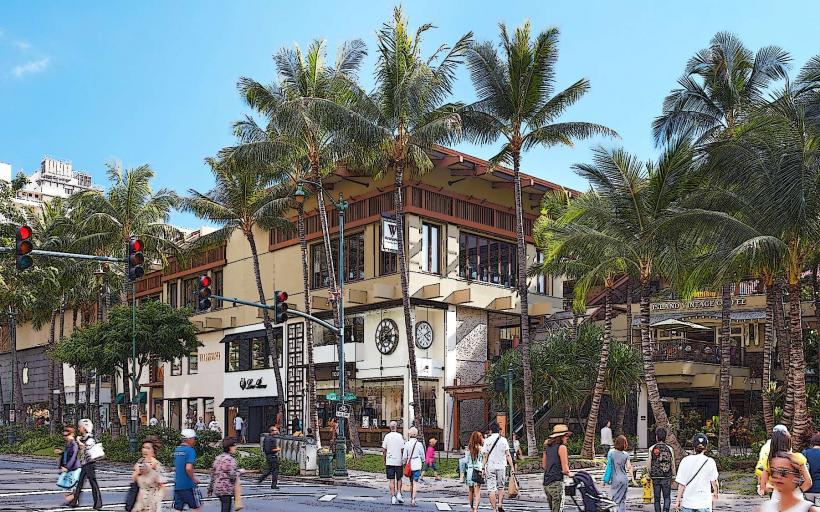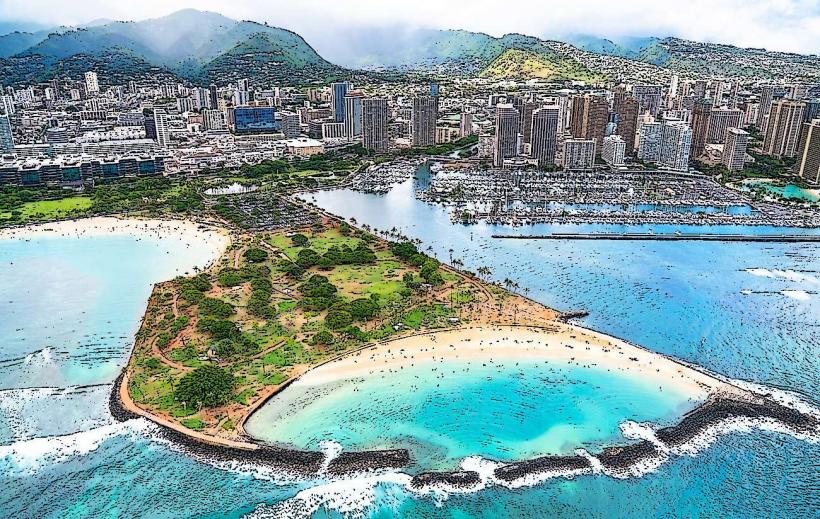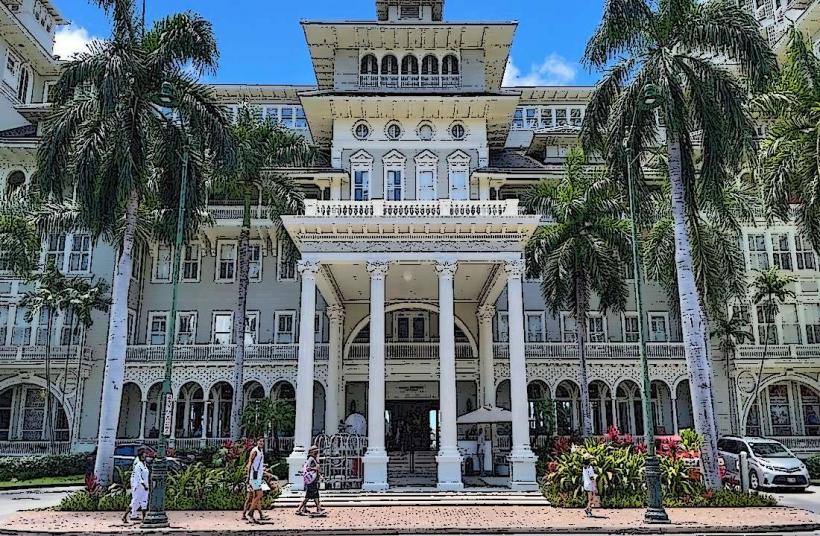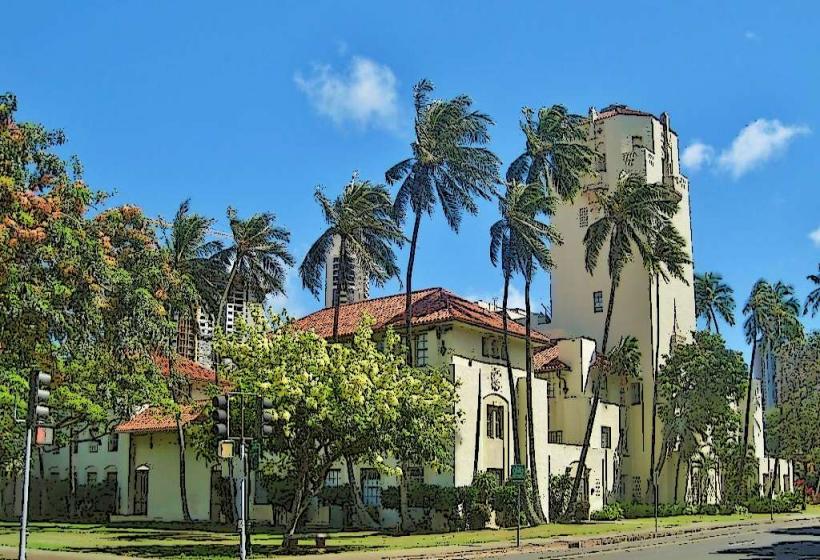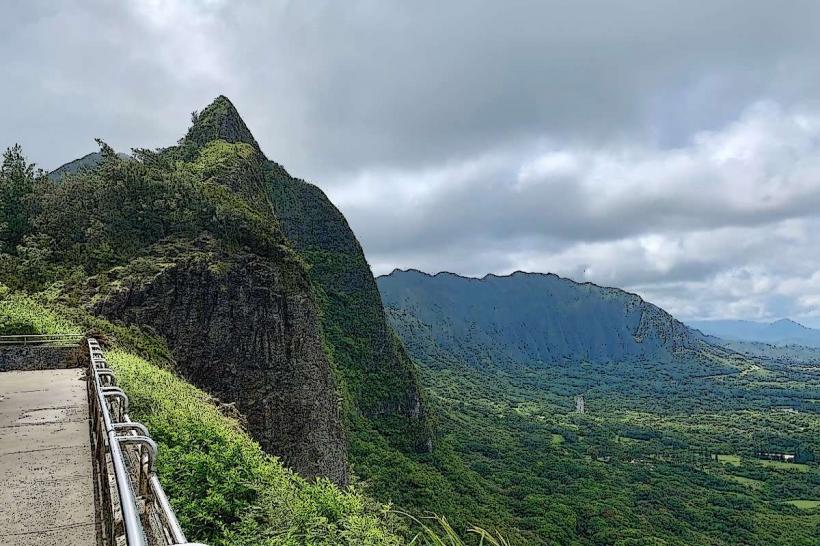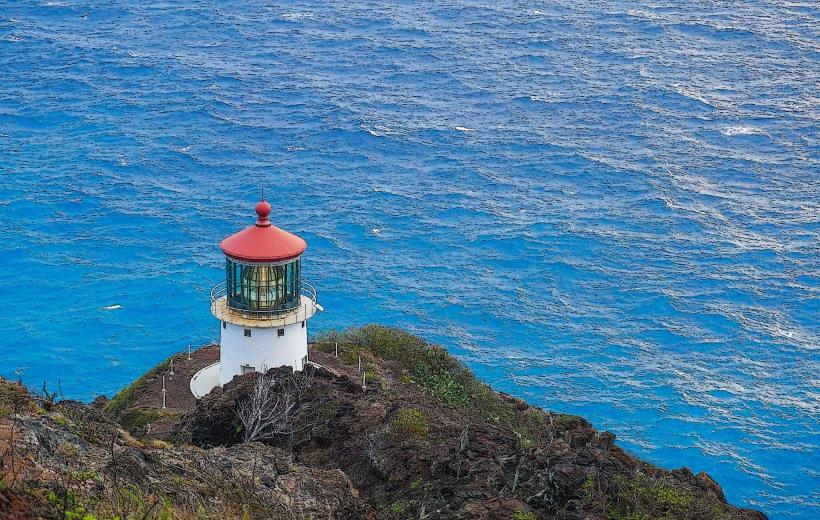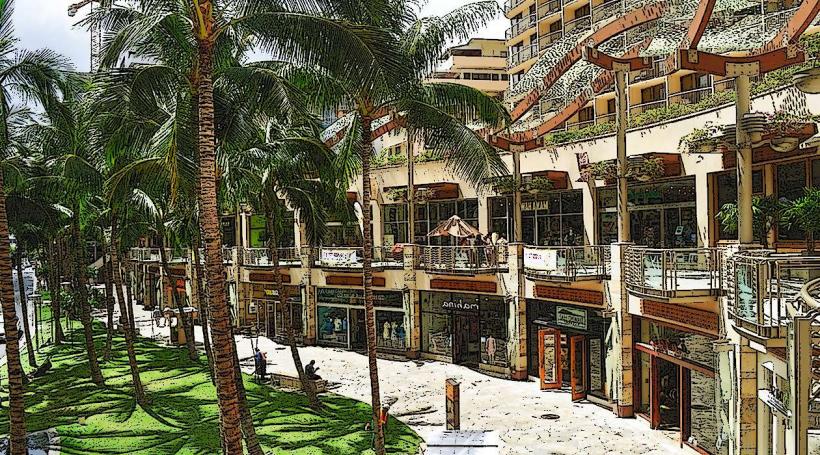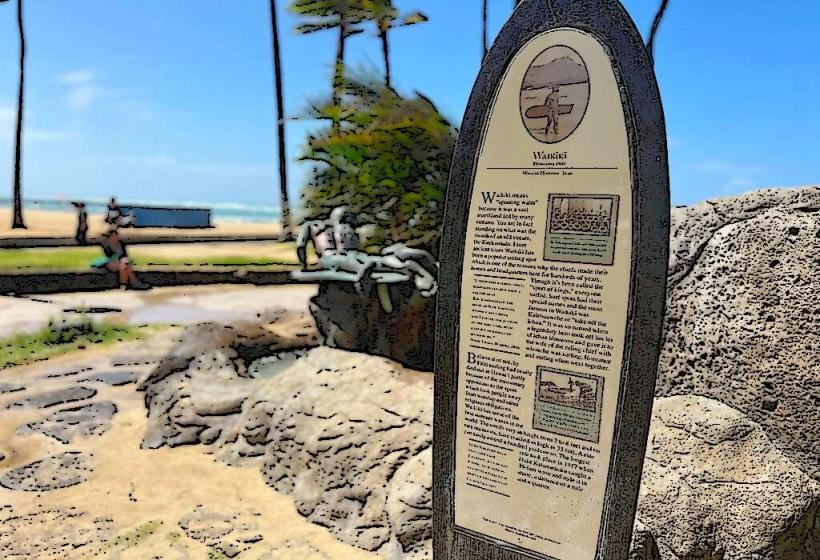Information
Landmark: Diamond Head CraterCity: Honolulu
Country: USA Hawaii
Continent: North America
Diamond Head Crater, also known as Lēʻahi Crater, is a defining feature of Oahu's southern coastline and one of Hawaii's most iconic natural landmarks. It is part of the Diamond Head State Monument, attracting hikers, history enthusiasts, and nature lovers.
Geological Overview
- Type: Tuff cone, formed by a brief, explosive volcanic eruption.
- Age: Approximately 300,000 years old, part of the Honolulu Volcanic Series.
- Formation:
- Created by a single eruption that sent ash and fine particles into the air. These materials settled and fused into tuff, forming the cone.
- The eruption left a crater that measures about 3,520 feet (1,073 meters) in diameter and rises 760 feet (232 meters) above sea level.
Historical Significance
- Ancient Hawaiian Use:
- The crater's rim was used as a heiau (temple) site and for signal fires to warn of approaching canoes.
- Its Hawaiian name, Lēʻahi, refers to its resemblance to a tuna's dorsal fin. The name is also linked to the legend of Pele, the volcano goddess, and her sister Hiʻiaka.
- Military Importance:
- Designated as Fort Ruger in 1904, it was Hawaii’s first U.S. military reservation.
- During World War II, the crater housed bunkers, tunnels, and artillery batteries to defend Honolulu from potential attacks.
- Remnants of these military installations can still be seen today, adding historical intrigue.
The Crater's Interior
- The crater floor is relatively flat and dry, with vegetation typical of Hawaii's arid regions, including native grasses and shrubs.
- The interior was historically used for military purposes but is now part of the Diamond Head State Monument, which includes hiking trails and interpretive exhibits.
Diamond Head Hiking Trail
The trail to the summit is the highlight of any visit to the crater.
Trail Details:
- Distance: 1.6 miles (2.6 kilometers) round trip.
- Elevation Gain: 560 feet (170 meters).
- Terrain: The trail is a mix of paved paths, switchbacks, staircases, and tunnels.
- Duration: About 1–1.5 hours round trip, depending on fitness level and stops.
Trail Features:
- Tunnels and Staircases: Includes a 225-foot tunnel and steep staircases, including a challenging 99-step ascent.
- Lookouts:
- Along the trail are observation posts used during WWII.
- The summit lookout offers sweeping views of Waikiki, Honolulu, and the Pacific Ocean.
Trail Tips:
- Timing: Visit early in the morning or late afternoon to avoid crowds and the midday heat.
- Preparation: Wear sturdy shoes, bring plenty of water, and use sunscreen.
- Fees: There is an entrance fee for non-residents and a parking fee for vehicles.
Flora and Fauna
- The crater's ecosystem reflects its dry, tropical environment.
- Plants: Includes native species like ʻilima and introduced plants like kiawe (mesquite).
- Wildlife: Birds such as zebra doves, mynahs, and small reptiles are common.
Nearby Attractions
- Kapiolani Park:
- Located near the crater's base, this park is a popular spot for relaxation and picnics.
- Honolulu Zoo and Waikiki Aquarium:
- Family-friendly destinations within walking distance of the crater.
- Waikiki Beach:
- A short drive or walk from Diamond Head, ideal for post-hike relaxation.
Fun Facts
- Designated a National Natural Landmark in 1968.
- The silhouette of Diamond Head is a cultural and visual symbol of Hawaii, featured on postcards, state logos, and souvenirs.
- The summit is one of the best spots on Oahu to view sunrise or sunset.

